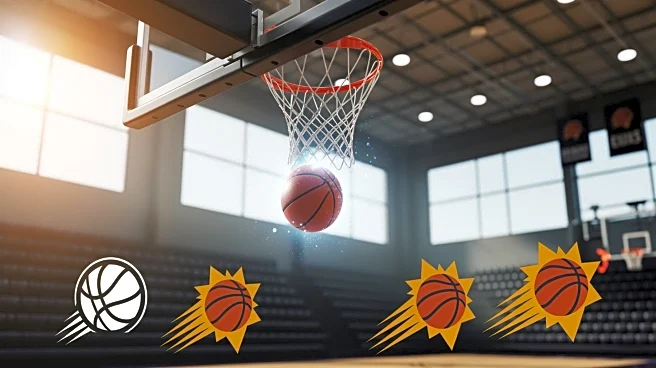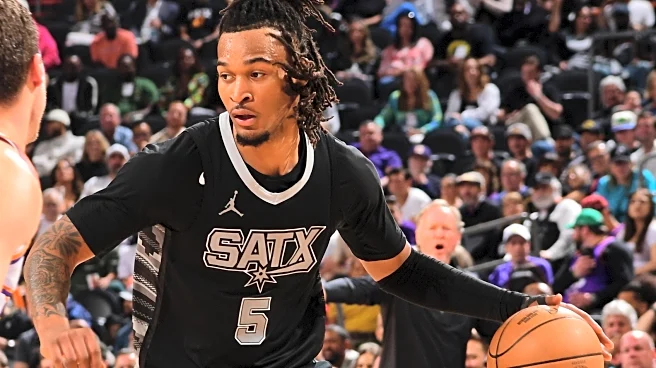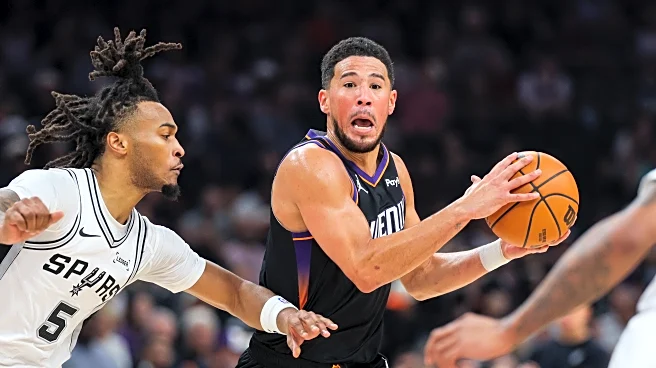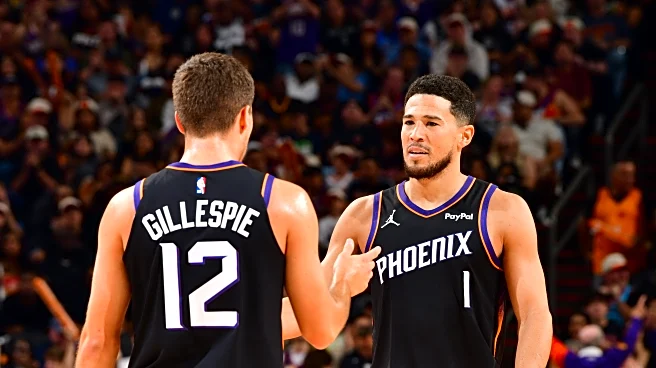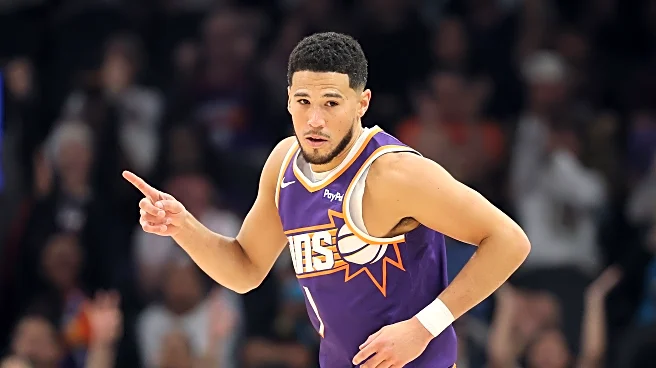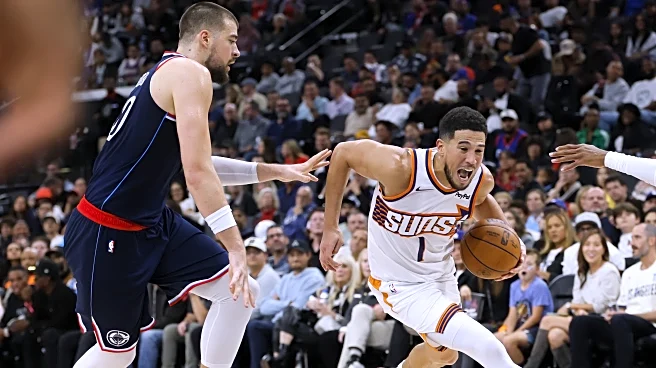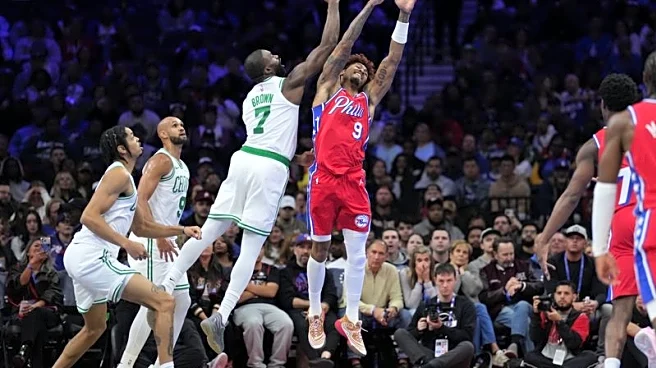Progress isn’t a straight line. It’s a trip through peaks and valleys, a mix of small victories and gut-punch moments that test whether you believe in what you’re building. As long as there’s a clear direction,
something to chase, and standards that hold you accountable, the climb continues.
The Phoenix Suns went 2–2 in week two of the NBA season. They dropped a couple they probably should’ve bagged, and stole one they probably shouldn’t have. But through it all, it felt like progress was taking shape.
Phoenix sits in an odd spot. Two starters, both of whom came over in the Durant trade, didn’t play. Normally, that’s a death sentence. You lose two pillars, you crumble. The Suns, however, didn’t. In four games, they posted a +29 point differential, fifth-best in the league in Week 2.
So what does that say? That they don’t need Dillon Brooks or Jalen Green? Of course not. It says something better. It says the team is starting to connect. That the early cracks are being filled with chemistry. For a group this new, they’re syncing faster than anyone could’ve predicted. You can see it in how they play, how they scrap, and how they carry themselves.
The road ahead is long. The highs will rise, the lows will sting, and some nights will make it hard to tell which is which. But that’s part of the deal. That’s the ride. Week 2 of the 2025–26 season felt like the beginning of something real. A team growing into its own identity. A team willing to irritate, disrupt, and keep fighting when it’d be easier to fold. A team that, dare I say, I am proud to watch.
Week 2 Record: 2-2
I’m still working out the best way to show this data. For possession differential, a “+” is good. A +1.8 means the Suns had more possessions than their opponent, which is what you want. But turnover differential is the opposite. A -4 is actually good because it means they had four fewer turnovers than the other team. So should that be shown as +4 instead? Then there’s offensive rebounding differential, where -10 is bad since it means they had ten fewer boards.
For now, I’m keeping turnover differential tied to the actual stats. If the Suns had four fewer turnovers, it’ll show as -4. Let me know in the comments if that feels confusing, if you see -4 and think that’s a bad thing.
@ Utah Jazz, L, 138-134 OT
- Possession Differential: +1.8
- Turnover Differential: -4
- Offensive Rebounding Differential: -10
Some games feel like they slip through your fingers, one or two decisions away from swinging your way. Last Monday in Utah was one of those. The Jazz are long, tall, and relentless, and starting both Ryan Dunn and Oso Ighodaro ended up backfiring. Both were played off the floor, and the Suns spent most of the night climbing out of a hole.
To their credit, the Suns didn’t fold. Down seven with 23 seconds left, they kept fighting, forced overtime, and made Utah earn every bit of it. It wasn’t a win, but it felt like progress.
vs. Memphis Grizzlies, L, 114-113
- Possession Differential: -1.2
- Turnover Differential: -3
- Offensive Rebounding Differential: -1
Another close one, and one I’m sure Devin Booker wishes he could get back, especially that last shot. The possession and offensive rebounding numbers were nearly even, and a few errant passes might have swung the outcome in the long run.
But for a team still learning how to win, this was another step in the right direction.
vs. Utah Jazz, W, 118-96
- Possession Differential: -3.2
- Turnover Differential: -3
- Offensive Rebounding Differential: -4
ChatGPT said:
You can credit the Suns for making adjustments from their first matchup with Utah, or you can point to the Jazz shooting a miserable 37.5% from the field. Last season, that kind of defensive effort only happened four times, and the Suns won all four.
This time, they handled their business, looked sharper on the glass, and took much better care of the ball. Yeah, they beat a team projected to win 19.5 games. That’s what you’re supposed to do. But behind Booker’s 36 points, they looked good doing it.
vs. San Antonio Spurs, W, 130-118
- Possession Differential: -2.4
- Turnover Differential: -6
- Offensive Rebounding Differential: -11
I hope this doesn’t sound like hyperbole, but that might’ve been the best game we’ve seen from the Suns in the last two years, maybe longer. Why? Because they had a plan against one of the toughest matchups in the league, Victor Wembanyama, and they executed it to perfection.
They frustrated him, rattled the Spurs, and behind a true team effort, took down an undefeated squad. Seven players scored in double figures. That doesn’t happen often. The last time it did was back on March 17, 2025, against Toronto.
Inside the Possession Game
- Weekly Possession Differential: -5.0
- Weekly Turnover Differential: -7
- Offensive Rebounding Differential: -26
- Year-to-Date Over/Under .500: -1
Let’s talk about the possession game this past week. The first thing that jumps out is how badly the Suns got handled on the boards. That’ll happen when you’re facing teams with length like Utah and San Antonio. But the thing that worked in the Suns’ favor, even while being out-possessed, was their ball security. They’re taking care of the basketball better than their opponents.
Now, if you look at the raw numbers, they’re still turning it over 17.3 times per game, which is second-worst in the league behind Utah’s 17.7. Considering they played the Jazz twice this week, that tracks. The Suns also sit 19th in total rebounds, so there’s plenty of room for growth in both areas the team emphasized coming into the season: protecting the ball and crashing the glass.
For a team that’s only two weeks in, there’s still a lot to figure out. But this week felt like progress, like forward movement.
And about the graphic…it’s starting to look a little chunky, kind of like a plate of spaghetti. Let me know in the comments if you’d rather I keep it this way, or if you want me to break each category into its own chart so it’s easier to digest. You know, like good spaghetti.

Week 3 Preview
We now turn to Week 3, where the Suns face three games against Pacific Division foes.
Before we dive into the matchups, let me remind everyone of something near and dear to my heart. I hate daylight saving time. Arizona doesn’t play that game. No fall back. No spring forward. We stay put. But when everyone else decides to shift their clocks, it throws everything off for us.
Those clean 7pm. West Coast tip-offs? Now they’re 8pm starts in Arizona. And I get it, I know I’m preaching to the choir here. There are diehard Suns fans in Germany catching games at five in the morning, fueled by caffeine and insanity. But still, for those of us who write an article after every game and then record a podcast about it, that extra hour hits hard. Thanks for attending my TED Talk.
The Suns kick off their week on Tuesday, an 8pm start of course, against the Golden State Warriors. It’s our first look at them this season. Golden State’s sitting at 4–3, trying to rediscover their rhythm on offense. So the formula’s simple, Suns. Attack with defense.
The other two games come against the Clippers, one at home on Thursday, then one on the road in Los Angeles on Saturday. That one tips off at 8:30. Fantastic. And for those of you hoping to catch it on ESPN through YouTube TV? Yeah, good luck. Apparently, we haven’t been drained of enough money yet, so I’m making the jump to FuboTV.
The Clippers are 3–2, tied with Denver for the fewest games played so far. Maybe the league’s being kind, giving the oldest roster in the NBA a little extra rest. Average age? 30.9 years. AARP might as well sponsor them rather than Aspiration.
51% of the community voted last week that the Suns would be 2-2. They were correct, although I’m not sure how many had the Suns downing the Spurs. So how will it all play out in Week 3?





